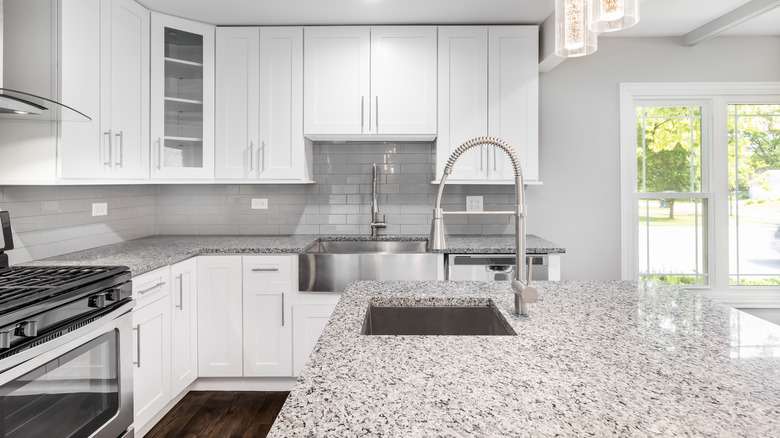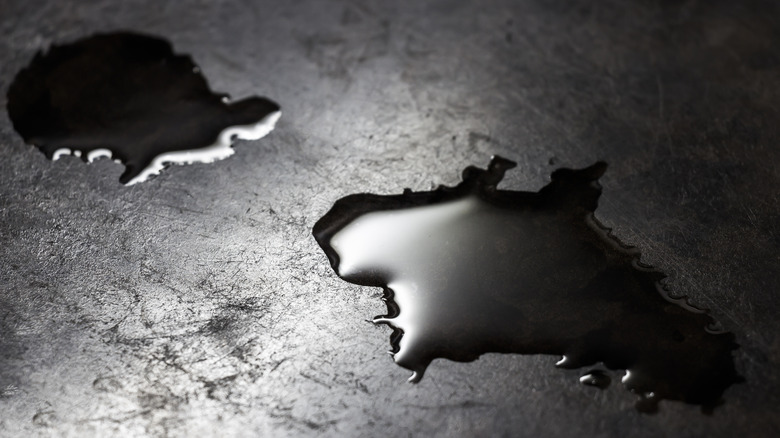The Simple Test That Tells You If It's Time To Reseal Your Stone Countertops
Countertops are the workhorse of the kitchen, acting as a surface for prepping, cooking, entertaining, and every other kitchen function. Because of this, they must be durable and long-lasting to withstand heavy use. There are many types of countertops available for your kitchen, but stone types top the list despite their typically-higher expense due to their high durability, stain resistance, and low-maintenance properties when properly-sealed. While stone countertops are usually installed with a sealer on them to begin with, this can wear off over time, so it is essential to reseal stone countertops periodically. But how do you know if it is time for maintenance? A simple water test will tell you if it is time to reseal your countertops based on whether the water beads up or is absorbed.
When it comes to resealing, the general recommendation ranges from annually to every few years, as there are a few factors that can affect when and whether or not you should seal your countertops. Lighter color options will need to be sealed more often, as they are less porous and more absorbent than darker types. Additionally, while you will want to keep your natural stone countertops looking their best with regular cleaning, if acidic cleaners are used, they can break down the protective coating, leading to the need to seal more frequently. Since these factors can significantly affect the timeline for sealing your countertops, the easy water test will help you know for sure when the time is right.
How to use the water test to see if it is time to seal your stone counters
To perform this simple water test, measure out about ¼ cup of water and pour small circles of water on different spots of your countertop, noting the time when you started the process. Check back in at the 5, 10, and 30 minute marks to see if the water has been absorbed and darkened the stone or if it remains beaded up on the surface. The simple answer is that if your water remains on the surface after 30 minutes without absorbing, there is no need to reseal, but if the water is absorbed at all during that 30 minutes, it is time to seal.
While anything absorbed under 30 minutes means the time to seal is now, your observations at the 5 and 10 minute marks will also help shed some insight on the timeline for sealing again in the future. If the water is absorbed immediately, your sealer will likely need to be applied annually, so perform the water test again in a year after sealing. However, the closer you get to the 30 minute mark before the stone absorbs the water, the longer you can wait to reseal again. In fact, it could be three to five years before maintenance is required. If the water isn't absorbed for some time, run the water test again in a couple years after sealing to keep an eye on the finish.

